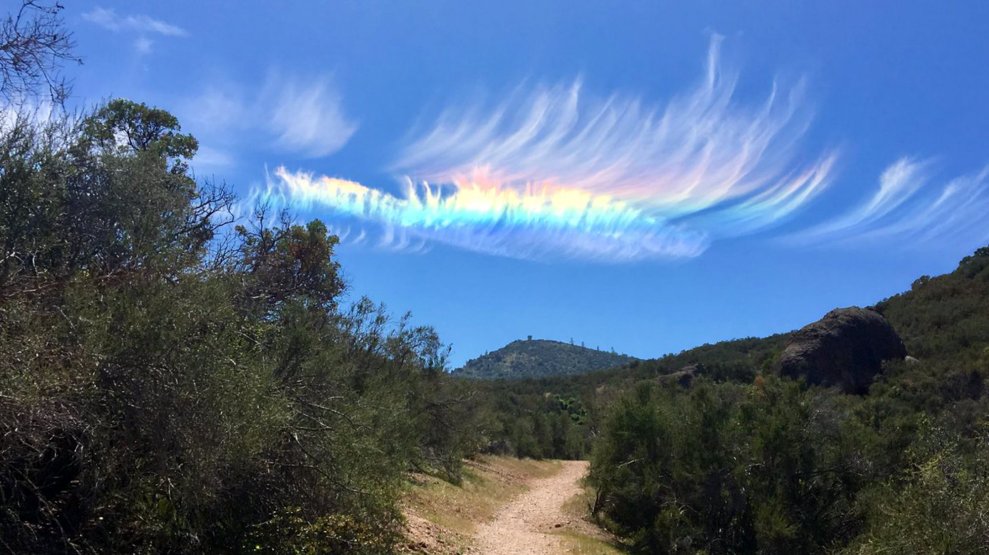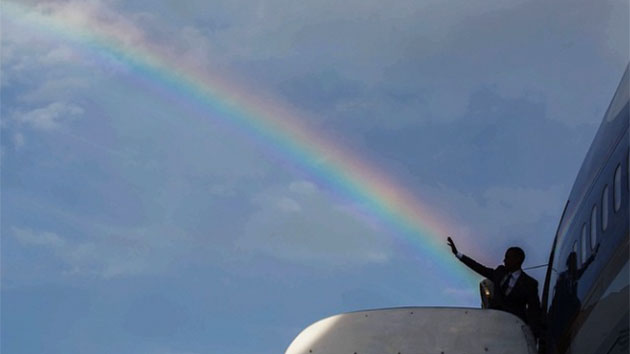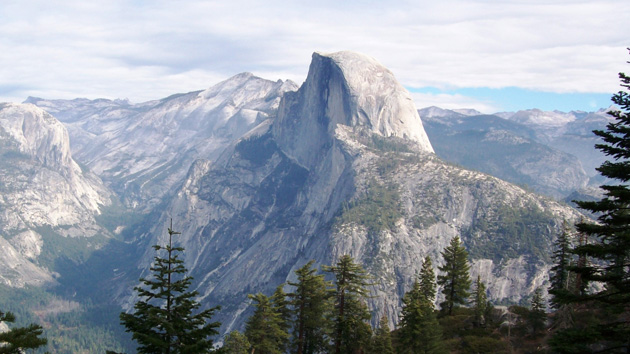
M. Jimenez
A flame-like streak of colorful clouds appeared in the sky over Pinnacles National Park in central California on Tuesday.
A man running in the park spotted the “fire rainbow” and sent pictures to the Bay Area division of the National Weather Service, which tweeted the eye-catching images, along with the technical name for the phenomena.
A "Fire Rainbow" 🔥🌈 was captured over @PinnaclesNPS yesterday. The more scientific name is a circumhorizontal arc. For more details https://t.co/VYycZRvrAu #cawx #atmoshpericoptics 📸 M. Jimenez pic.twitter.com/FwkjZuthJe
— NWS Bay Area (@NWSBayArea) April 25, 2018
So what combination of clouds, moisture, and light come together to create these beautiful circumhorizontal arcs? How are they the same, and different, from the usual rainbows we see?
Basically, ice crystals in wispy, high-altitude cirrus clouds act like thousands of tiny prisms, similar to the role of raindrops in a normal rainbow. For a fire rainbow to appear, those hexagonal crystals need to be lined up perfectly and so does the sun, which must be very high in the sky (at least 58 degrees above the horizon). As sunlight streams through the cloud at the right angle, the crystals refract the light and create an array of colors.
The likelihood of seeing one of the arcs depends on where you live. Latitude is crucial; the further from the equator you are, the less time the sun is sufficiently high enough in the sky. In the US, the arcs may be seen five or more times each summer, according to the website Atmospheric Optics. The site also adamantly clarifies that the colorful arc “is not a rainbow and has nothing to do with fire.”
“There’s no real way of predicting these types of things, the same way we can’t predict rainbows,” says Roger Gass, a meteorologist with the NWS Bay Area office, who has never seen a fire rainbow himself. “It’s always worth looking up in the sky to see what’s there.”















